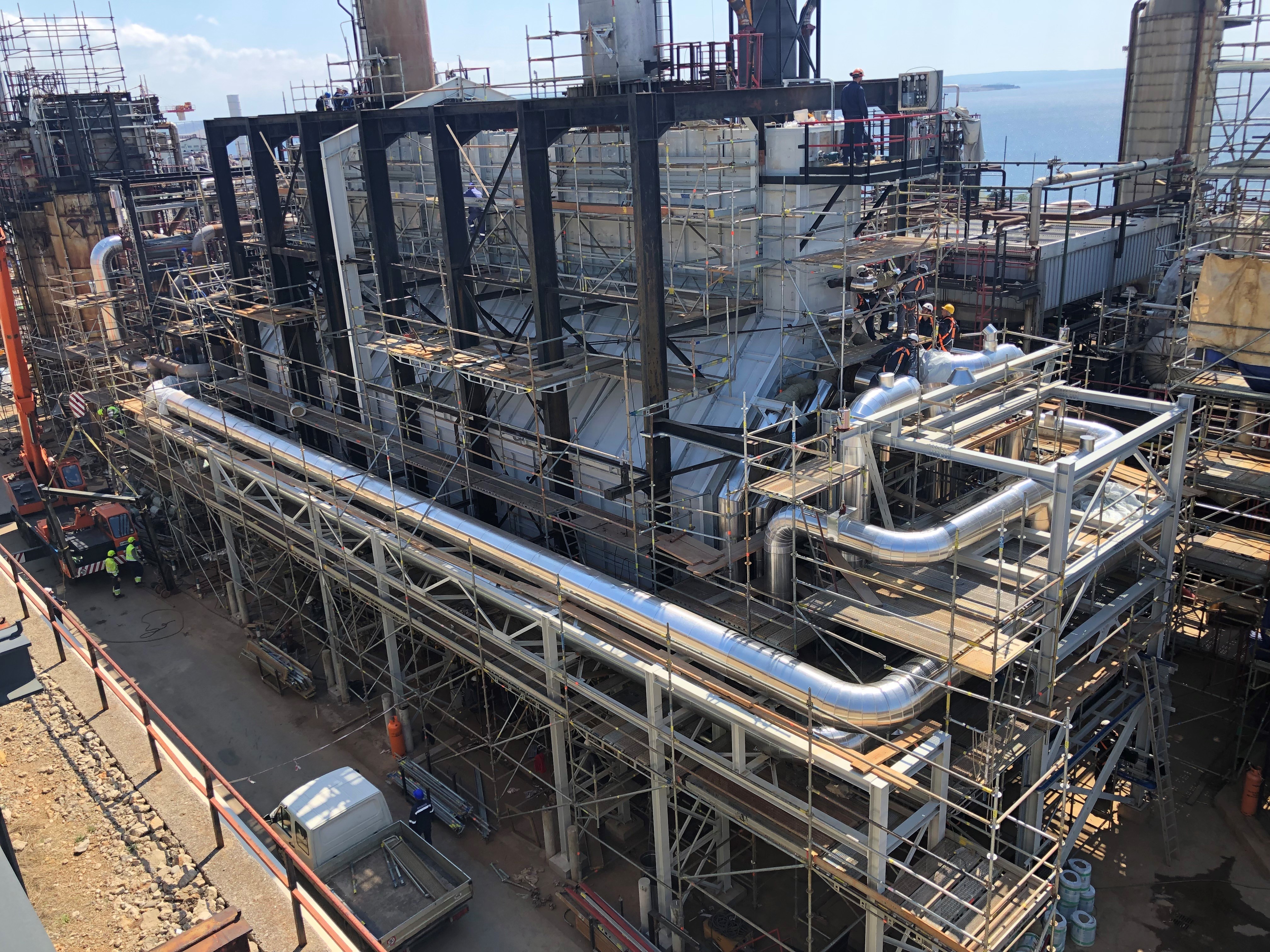Select an application
Continuous Catalyst Regeneration (CCR) reformer design is similar to a fixed-bed semi-regenerative design with heaters between each reactor and a recycle gas compressor in order to reduce coke make. In order to ensure a continuous operation of the unit, the catalyst must move or circulate through the reactors and the regenerator so that coke is burned and the catalyst regenerated on a continuous basis.
Process Technologies
Catalysts & Grading Materials
Adsorbents
Furnaces & Heat Recovery
Consulting, Supply & Support
Cyclic Reforming utilizes a swing reactor in addition to on-oil reactors and separate regeneration system to maintain continuous operation of the reaction system, while individual reactors are regenerated in the regeneration system.
As a reactor becomes sufficiently deactivated, the swing reactor replaces it in the on-oil reactor series through a sequence of valve movements in the reaction and regeneration headers.
Catalysts & Grading Materials
Adsorbents
Consulting, Supply & Support
Hydrotreated naphtha feed is combined with hydrogen-rich recycle gas, preheated by heat exchange with the reactor effluent and then further heated in a fired heater before entering the first reactor. As the endothermic reforming reactions cool the feed and product mixture, the effluent from the first reactor must be reheated to the required reaction temperature in a fired heater before entering the second reactor, and similarly for the last reactor.
Process Technologies
Catalysts & Grading Materials
Adsorbents
Furnaces & Heat Recovery
Consulting, Supply & Support
Resources
Technical Article - Development in reforming catalysts: a never ending story
Technical Article - Development in reforming catalysts: a never ending story
Technical Article - A bio-based solution for producing renewable ethylene
Technical Article - Enhance Aromatics Production Part 2
Specific Surface Area Stability: a Key to Prolonged Optimum Performance from Naphtha Reforming Catalyst
Rising Petrochemicals
Chloride Guards for Naphtha Block Streams: AxTrap™ 867
3 Questions to Xavier Decoodt on Catalytic Reforming
White Paper - Catalytic Reforming
Technical Article - Development in reforming catalysts: a never ending story
Technical Article - Development in reforming catalysts: a never ending story
Technical Article - A bio-based solution for producing renewable ethylene
Technical Article - Enhance Aromatics Production Part 2
We are getting organochlorides in some product streams and have traced this back to the catalytic reformer. Causes and prevention measures please.
Axens is Pleased to Announce the Launch of the New P/PR 200 Series in the Symphony® Catalysts Family
Axens selected for CPCL Cauvery Basin Refinery Project in India
Axens selected for Numaligarh Refinery Expansion Project in India
Successful operation of Axens’ units and digitalization at the ERC refinery
TO CONTACT US
Please fill in the contact form below
